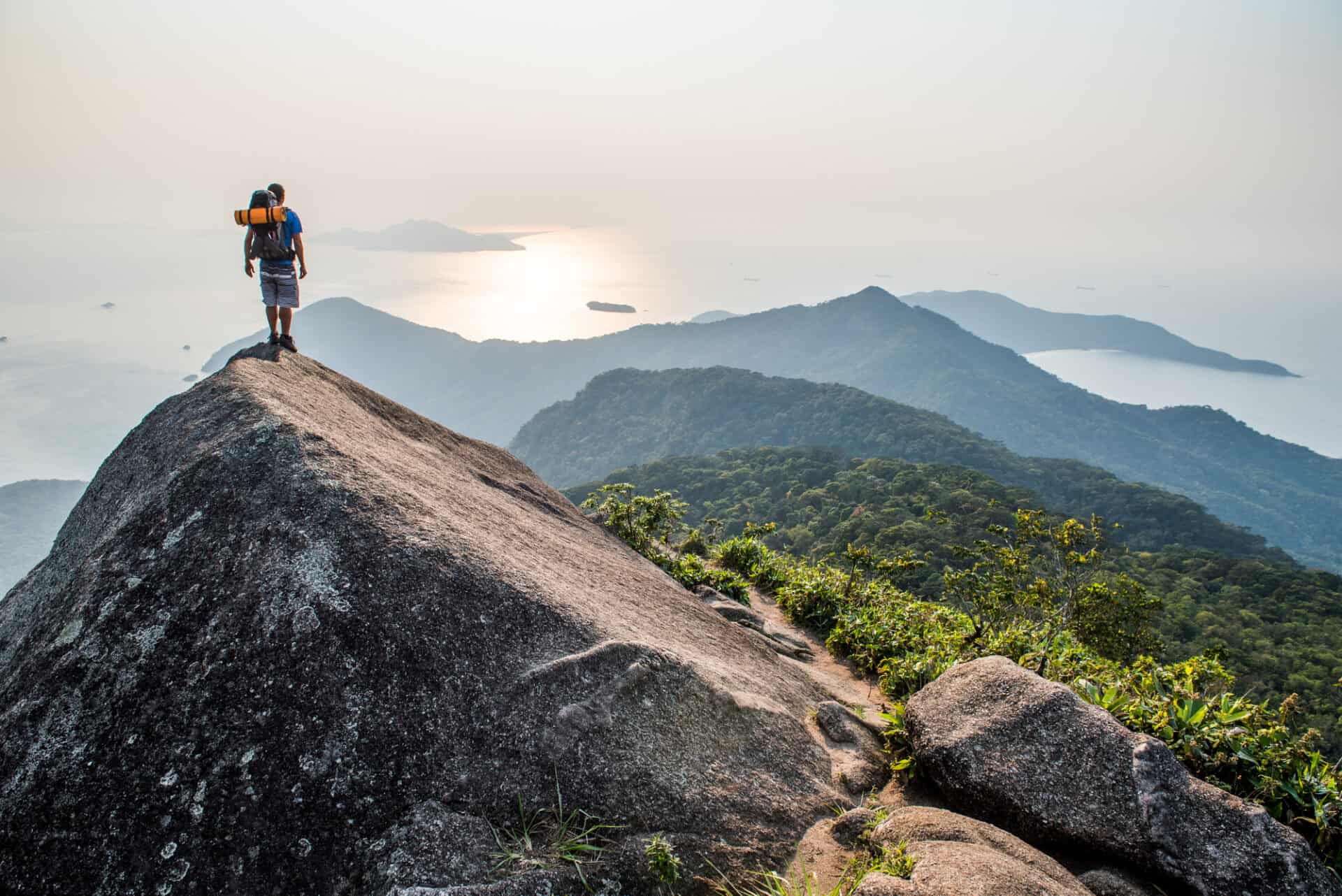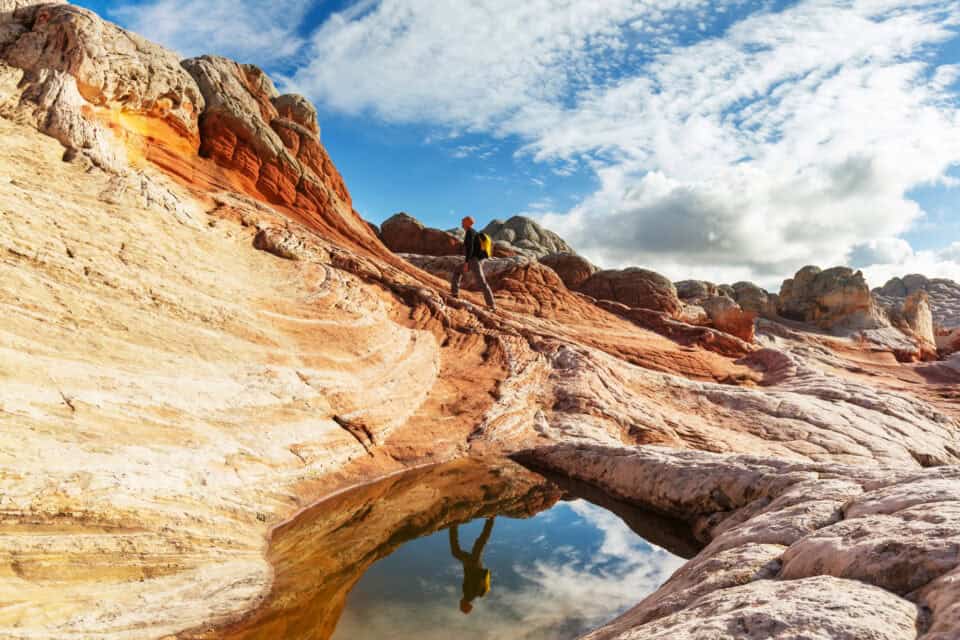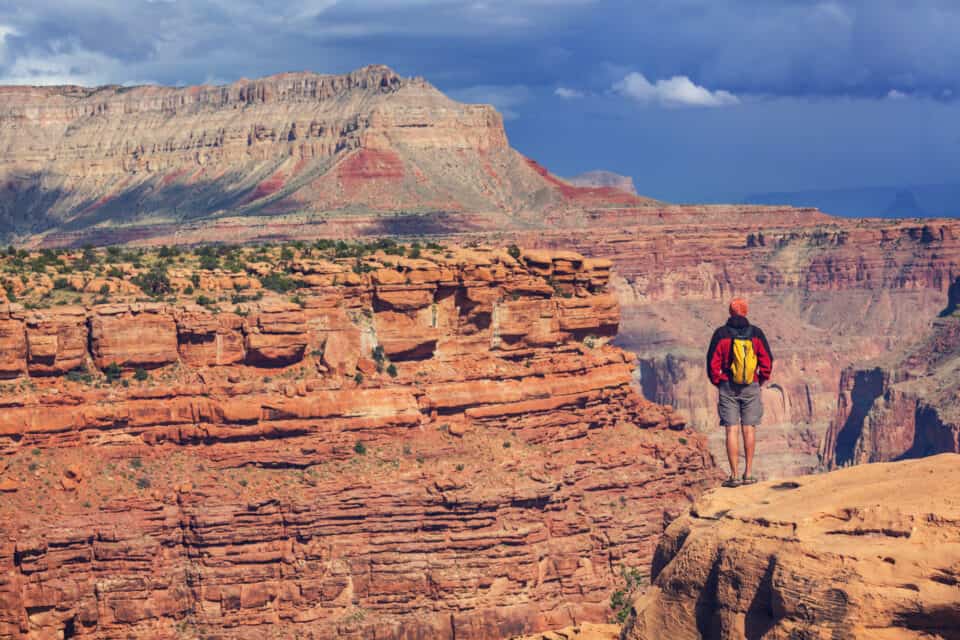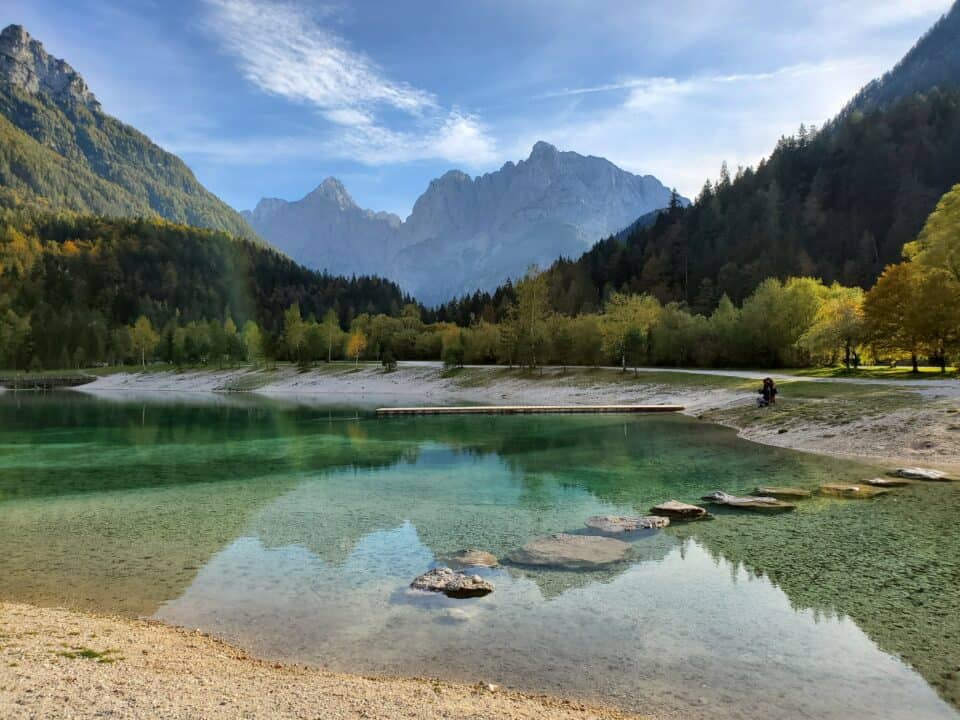South America offers an abundance of diverse landscapes and breathtaking hiking opportunities like the Inca Trail and the Lost City trek. Here are some notable hikes in different countries across the continent:
Inca Trail (Peru):
One of the most famous hikes in the world, the Inca Trail, takes you through the Andes Mountains, leading to the ancient city of Machu Picchu. This multi-day trek, that follows the footsteps of the Incas, combines mountain views, Inca ruins, and diverse ecosystems. Intipunku (Sun Gate) or the Puerta del Sol is located at the entrance of Machu Picchu, this viewpoint offers a captivating view of the entire site, with its terraces, temples, and the iconic Huayna Picchu mountain in the background. The Peruvian government regulates access to the Inca Trail to preserve the environment and protect the route. As such, a limited number of permits are issued each day. It is essential to choose a licensed tour operator that practices responsible trekking and treats its staff appropriately, ensuring fair wages and suitable working conditions for porters and support staff. This helps protect the environment and supports the local communities. Hiking the Inca Trail is a once-in-a-lifetime experience, offering an incredible mix of nature, history, and adventure.
Torres del Paine Circuit (Chile):
Located in Torres del Paine National Park in Chilean Patagonia, this challenging 9 to 11-day trek offers stunning vistas of jagged peaks, turquoise lakes, glaciers, and vast open spaces. There are several variations of the Torres del Paine Circuit, but the most popular one starts and ends at the park’s administration area, known as Laguna Amarga. The Towers (Las Torres), three granite spires, are one of the most iconic sights in the park. The hike through the French Valley is often considered the most picturesque section of the circuit. Located in the western part of the circuit, Grey Glacier is a massive ice formation that descends from the Southern Ice Field. To hike the Torres del Paine Circuit, you must obtain a permit from the park administration. The number of visitors allowed on the trail is regulated to protect the environment. Book permits in advance, especially for the popular summer season. It’s important to practice responsible trekking in Torres del Paine. Respect the environment, follow designated paths, and adhere to Leave No Trace principles. Be mindful of the park’s regulations and guidelines to ensure the preservation of this beautiful wilderness. Trekking the Torres del Paine Circuit is a true adventure, immersing you in the raw beauty of Patagonia.
Cordillera Huayhuash (Peru):
This mountain range is located in the Andes, northeast of Lima, and famous for some of the most beautiful mountains in the world, including Yerupajá, Siula Grande and Rasac. The Classic Huayhuash Circuit is a popular choice and taking around 10 to 15 days to complete. Trekking in the Cordillera Huayhuash rewards you with breathtaking views of towering peaks, hanging glaciers, turquoise lakes, and unique geological formations. Along the trek, you will also have the chance to interact with the local Quechua-speaking communities, experiencing their traditional way of life and learning about their rich cultural heritage. To trek in the Cordillera Huayhuash, you will need to obtain a permit from the Huascarán National Park office in Huaraz or from the community-run offices in the Huayllapa or Llamac villages. These permits help support conservation efforts and allow you access to the protected area.
Aconcagua (Argentina):
Aconcagua in the province of Mendoza is the highest peak in the Americas and a popular trekking destination for experienced mountaineers. It stands at an impressive height of 6,960.8 meters (22,837 feet) and offers stunning panoramic views of the Andes Mountains. The Normal Route (Vacas Valley and Horcones Valley) is the most commonly used route, though it still requires proper acclimatization and mountaineering experience. To trek Aconcagua, you need to obtain a permit from the Provincial Park Administration. The park has regulations in place to ensure visitor safety and environmental conservation. It’s important to understand and adhere to these regulations, which include proper waste disposal and respecting the fragile ecosystem of the mountain.
Colca Canyon Trek (Peru):
One of the world’s deepest canyons, located in southern Peru, offers a challenging yet rewarding hiking experience. There are multiple routes available for the Colca Canyon Trek, ranging from one to four days in duration. You will need to pay an entrance fee at the canyon’s entrance. Guides provide valuable insights, ensure your safety, and help support the local community. The most common route is a two-day trek that starts from the village of Cabanaconde and descends into the canyon, passing through Sangalle (also known as the Oasis, a lush and green area with palm trees, natural pools, and small lodges) before ascending back up. Viewpoint Cruz del Cóndor is known for its impressive vantage point to observe the Andean condors, one of the world’s largest flying birds. Watching them soar gracefully through the canyon is a remarkable experience. The indigenous communities still practice ancient agricultural techniques, create intricate textiles, and celebrate traditional festivals. Visiting these communities adds a cultural dimension to the trek.
Fitz Roy Trek (Argentina):
Located in Los Glaciares National Park, the Fitz Roy Trek, also known as the El Chaltén Trek, takes you through the breathtaking landscapes of the Southern Patagonian Ice Field, with views of the Mount Fitz Roy and its surrounding peaks. This trek offers jagged mountain ranges, pristine glaciers, and picturesque lakes. The view from Laguna de los Tres, with Mount Fitz Roy reflected in the glacial lake, is one of the most awe-inspiring sights in Patagonia. The region is home to diverse wildlife, and you may come across guanacos (wild llamas), condors, eagles, and other bird species while trekking. El Chaltén is the starting point for the Fitz Roy Trek and serves as a base for hikers. It is a small mountain town nestled in the Andes, known as the “Hiking Capital of Argentina.”
Ciudad Perdida (Colombia):
Also known as the Lost City trek, this ancient archaeological site is nestled in the dense jungles of the Sierra Nevada de Santa Marta in northern Colombia. The trek involves several river crossings, providing opportunities to cool off in natural pools and admire cascading waterfalls, such as El Paraiso and Quebrada Valencia. The Ciudad Perdida trek takes you through lush jungles, indigenous villages, and ancient ruins, leading to the archaeological site of Ciudad Perdida. This ancient city is believed to have been built by the Tayrona civilization around the 9th century AD, predating Machu Picchu by several centuries. The city was abandoned and lost to the jungle until its rediscovery in the 1970s. Today, it stands as a testament to the advanced engineering and architectural skills of the Tayrona people. The classic Ciudad Perdida trek usually takes between 4-6 days to complete. Along the trekking route, you will have the opportunity to interact with the local indigenous communities, primarily of the Kogi and Wiwa tribes. These communities have preserved their traditional way of life, and learning about their culture and customs adds depth to the trekking experience. To access Ciudad Perdida, you must obtain a permit, and access is limited to guided tours. The Colombian government regulates the number of visitors to preserve the archaeological site and protect the environment. Responsible trekking practices, such as carrying out all waste and respecting local customs and traditions, are crucial to ensure the sustainability and preservation of this culturally significant area.
Salkantay Trek (Peru):
An alternative to the Inca Trail, the Salkantay Trek traverses breathtaking mountain scenery, high passes, and secluded valleys, allowing you to experience the Andean wilderness and reach the iconic Machu Picchu. This challenging route, named after the majestic Salkantay Mountain, eventually leads to the historic site, offering a more remote and less crowded experience. The most common route starts in Mollepata and ends in Aguas Calientes, the town located at the base of Machu Picchu. As you approach the end of the trek, you will visit the Llactapata ruins, which offer a panoramic view of Machu Picchu in the distance. The ancient Inca city, hidden among the mountains, is a UNESCO World Heritage site and one of the New Seven Wonders of the World. Exploring the ruins and learning about the fascinating Inca history is a highlight of the trek. No permits are required to trek the Salkantay route, unlike the Inca Trail.
Rainbow Mountain (Peru):
Cusco’s Rainbow Mountain, also known as Vinicunca or Montaña de Siete Colores, is located in the Andes Mountains. The mountain is characterized by its colors, which result from the unique mineralogy of the area. The vibrant shades on the mountain slopes include variations of red, yellow, green, and blue, forming a natural spectacle that’s truly unique. Rainbow Mountain is a fragile ecosystem, so it’s important to practice Leave No Trace principles. Carry out any trash and avoid damaging the natural surroundings. Stay on designated trails to preserve the delicate terrain.
Pico do Papagaio (Brazil):
This renowned hiking destination is located in the Costa Verde region of Brazil. Pico do Papagaio, which translates to “Parrot’s Peak,” is a mountain situated in the Serra da Bocaina National Park. It typically takes around 6 to 8 hours to complete the round trip. The summit of Pico do Papagaio provides panoramic vistas of the lush Atlantic Forest, abundant with diverse flora and fauna. On a clear day, you can catch glimpses of the picturesque coastline, the Bay of Paraty, and the surrounding mountain ranges. If you want to experience the mesmerizing sunrise and sunset from the summit, it’s possible to camp overnight near the peak. Just ensure you have the necessary equipment and obtain any required permits in advance.

These are just a few examples of the incredible hiking opportunities that South America has to offer. Each hike comes with its own unique challenges and rewards, allowing you to immerse yourself in the continent’s stunning natural landscapes and vibrant cultures. Remember to research and prepare adequately, considering factors such as weather conditions, fitness levels, and necessary permits or guides for certain treks.
Sustainable Impact: Conscious travelers prioritize sustainable practices that minimize their negative impact on the environment. They seek out eco-friendly accommodations, reduce waste, and support local businesses that promote sustainable practices, such as using renewable energy or incorporating recycling initiatives.
Preserving Natural Beauty: Conscious travelers appreciate the natural beauty of the destinations they visit and take steps to preserve it. They follow designated trails, avoid littering, and respect wildlife and natural habitats. By taking responsible actions, they contribute to the long-term preservation of these natural wonders.
This article is part of the series by Conscious Travel Guide, your resource for mindful globetrotting.


